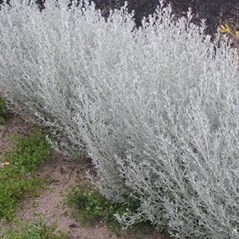Olearia axillaris
Coast Daisy Bush
Notes
Uses: Primarily a foliage plant useful for group plantings in wider verges, median strips and roundabouts. Extremely hardy in coastal locations and can be used as a sand or soil binder. Responds to pruning as a good hedging or screening plant. Requires well-drained soils. Indigenous peoples used the crushed leaves as a insect repelant.
Note: Fire retardant plant as per SA Country Fire Service, contact for further information.
This plant is indigenous to the following botanical regions of South Australia.
:NU: Nullarbor
:GT: Gairdner-Torrens
:EP: Eyre Peninsula
:NL: Northern Lofty
:MU: Murray
:YP: Yorke Peninsula
:SL: Southern Lofty
:KI: Kangaroo Island
:SE: South Eastern
For detail on these regions refer to the user guide.
- Height 1.5-3m
- Spread 1-2.5m
- Position
- Full Sun
- Family Asteraceae
- Botanical Name Olearia axillaris
- Common Name Coast Daisy Bush
- Origin SA, Vic, NSW, WA, Tas
- Habit Dense, Compact
- Landscape Coastal cliffs, Coastal dunes, Coastal footslopes, Hills, Plains, 2nd line coast
- Soil Texture Loam, Sand
- pH Acidic, Alkaline, Neutral
- Tolerates Drought, Fire, Lime, Moderate frost, Salt spray
- Supplementary Watering Minimal
- Flower Colour Cream
- Flowering Time Autumn
- Flower Type Daisy
- Purpose Habitat, Ornamental, Erosion, Wind protection, Screen
- Evergreen/Deciduous Evergreen
- Form Medium Shrub (Usually between 1.2m & 3.6m)
- Indigenous to the Adelaide Region







